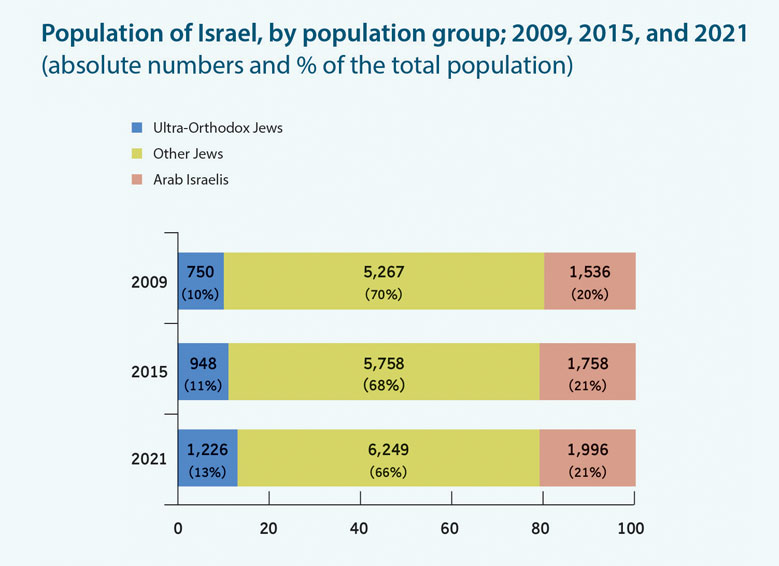Population
Chap. 1
The annual growth rate of Israel's ultra-Orthodox population 4%- is higher than any other population group in developed countries. Underlying this unique rate of growth are high fertility rates, modern standards of living and medical care and a young age at first marriage. Israel’s ultra-Orthodox population is very young, with almost 60% of its members under the age of 20, compared with 31% of the general population. In 2021, the ultra-Orthodox population stood at approximately 1,226,000, compared with some 750,000 in 2009, and currently constitutes 12.9% of the total population. According to Central Bureau of Statistics forecasts, its relative size will increase to 16% in 2030, and it will number two million people by 2033.


There has been a slight decline in ultra-Orthodox fertility rates over the last decade and a half, from 7.5 live births per woman between 2003 and 2005, to 6.9 between 2017 and 2019. Among other Israeli Jewish women, the average fertility rate is 4.3 for religious women, 3.0 for traditional-religious women, 2.4 for traditional non-religious women, and 2.1 for secular women.
The two “capital cities” of the ultra-Orthodox community in Israel are Jerusalem and Bnei Brak, which (as of 2019) are home to 43.2% of ultra-Orthodox Israelis (26.4% in Jerusalem and 16.8% in Bnei Brak). Alongside these centers, are ultra-Orthodox “suburban cities,” including Beit Shemesh, Modi’in Illit, Beitar Illit, and Elad, in which a total of 23.6% of the ultra-Orthodox population reside. Additional concentrations of ultra-Orthodox residents can be found in large and well-established cities such as Ashdod, Petah Tikva, Haifa, Rehovot, and Netanya, in which a total of 12.6% of the ultra-Orthodox population reside. These three types of residential settings, together encompassing 11 cities, are home to 79.4% of Israel's ultra-Orthodox population.











